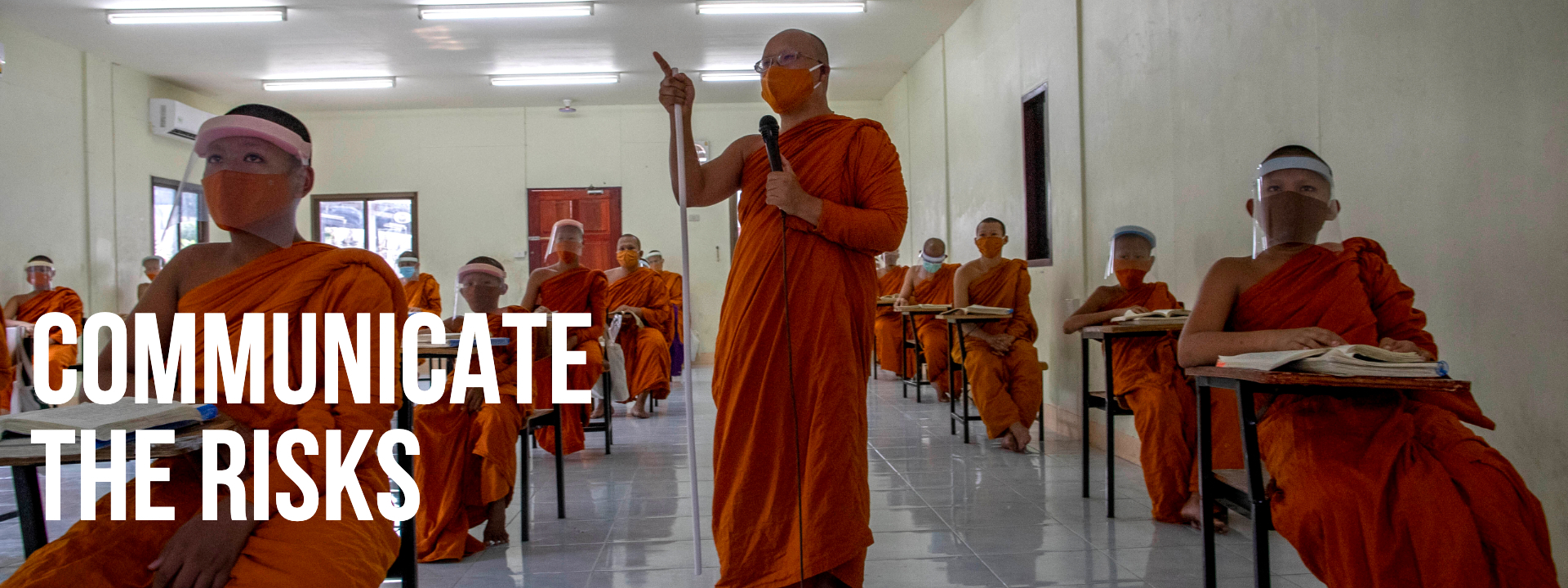
Novice Buddhist monks in Bangkok, Thailand. /Gemunu Amarasinghe/AP Photo
Novice Buddhist monks in Bangkok, Thailand. /Gemunu Amarasinghe/AP Photo
You would imagine that politicians, who often owe their office to the mainstream marketing of messages in order to influence people's behavior, would be good at communicating in a crisis. Sadly, the evidence from the COVID-19 pandemic is that some are far better than others – and some are disastrously muddled.
Depending on the situation, pandemic communication can be polite, forceful or fearful; what it shouldn't be is vague or contradictory. But governments face a double dilemma of timing and tone. Firstly, they may be dealing with a disease, the effect and methods of which are largely unknown, leading to changes in scientific advice as more is discovered. Secondly, there is a difficult line to be walked between warning people and frightening them, even if a little healthy fear can often keep us alive.
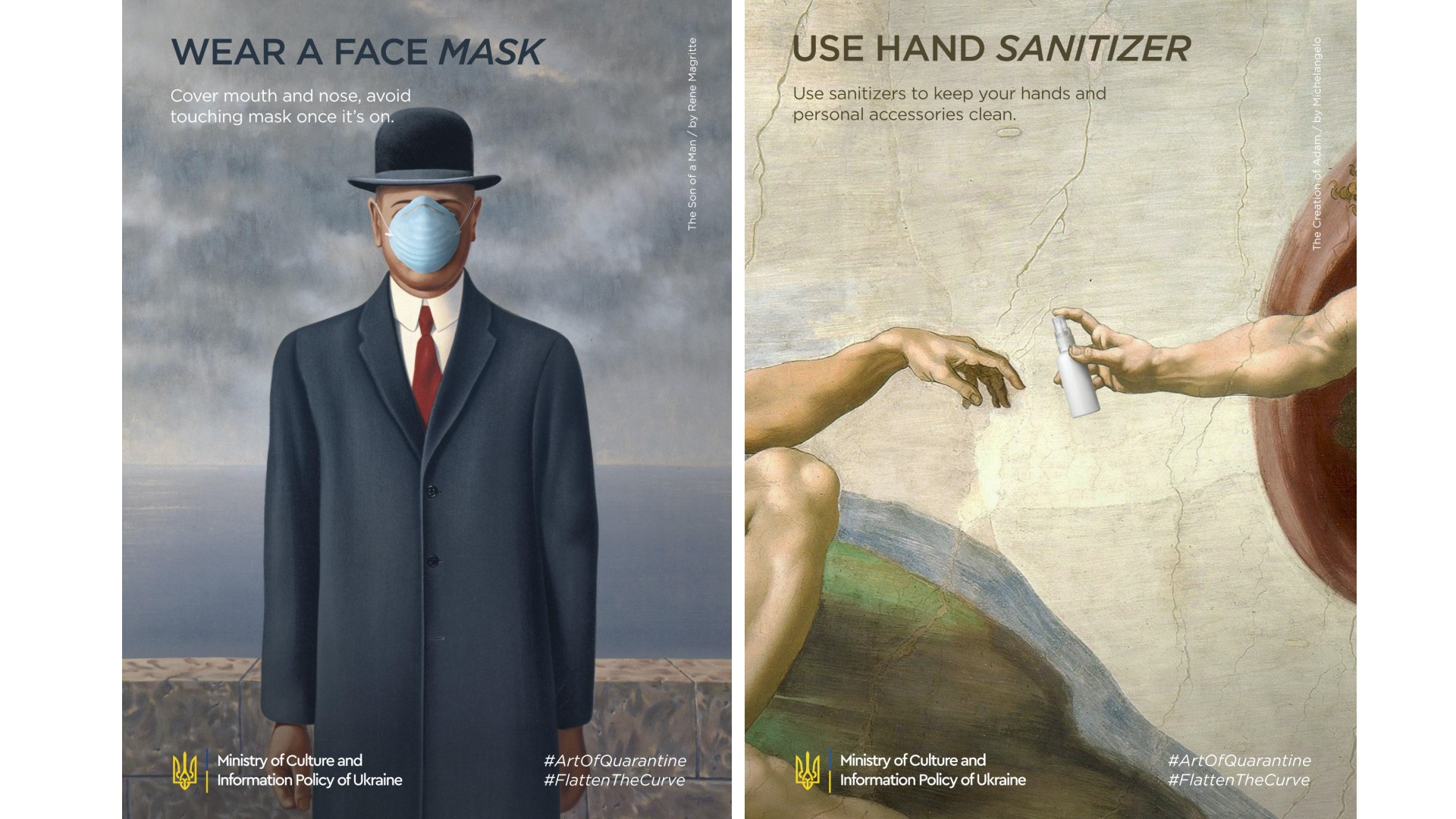
In Ukraine, Magritte and Michelangelo are invoked to promote face masks and sanitizer. /Ministry of Culture and Information Policy of Ukraine
In Ukraine, Magritte and Michelangelo are invoked to promote face masks and sanitizer. /Ministry of Culture and Information Policy of Ukraine
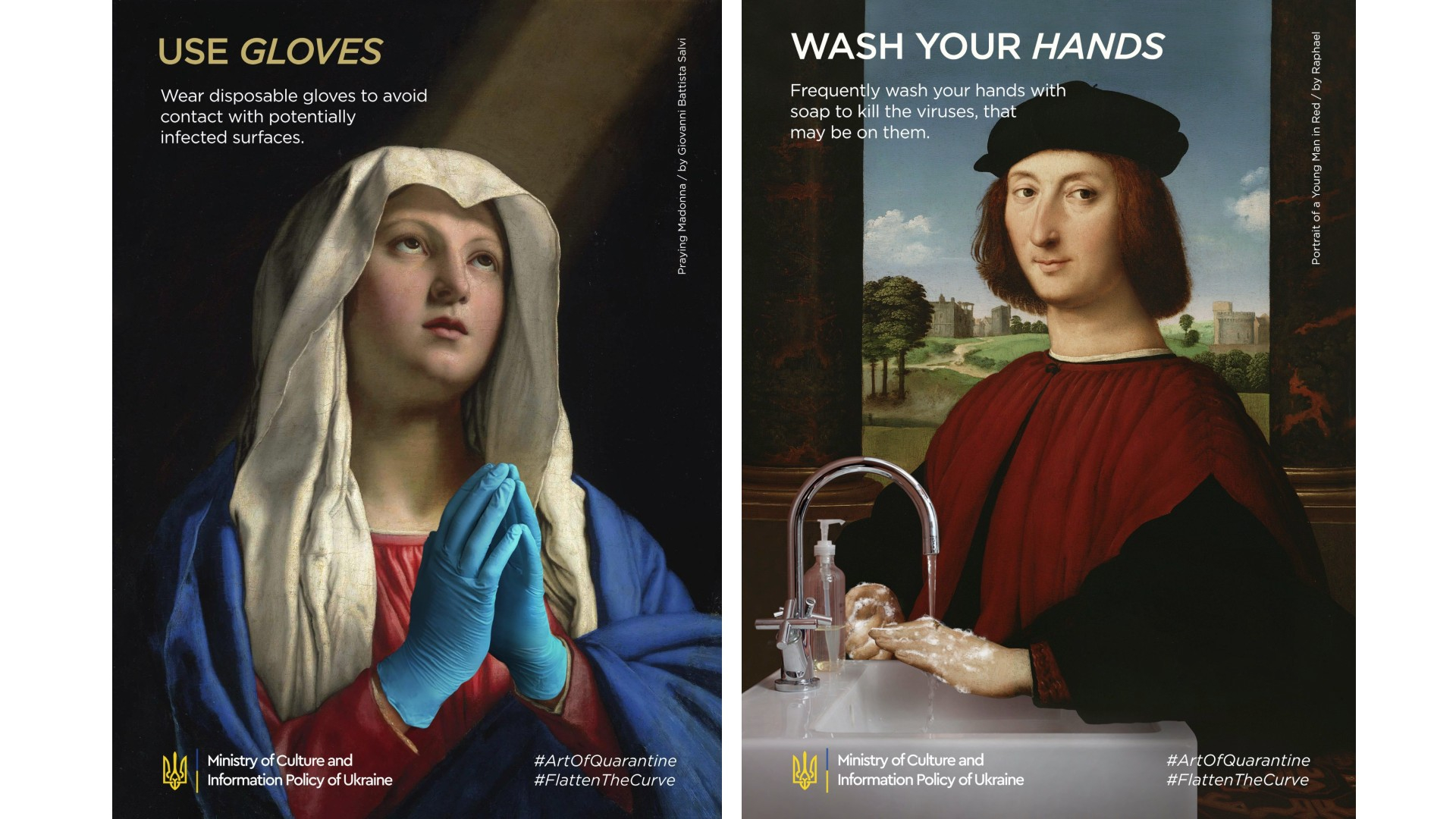
Sassoferrato and Raphael say wear gloves and wash your hands. /Ministry of Culture and Information Policy of Ukraine
Sassoferrato and Raphael say wear gloves and wash your hands. /Ministry of Culture and Information Policy of Ukraine
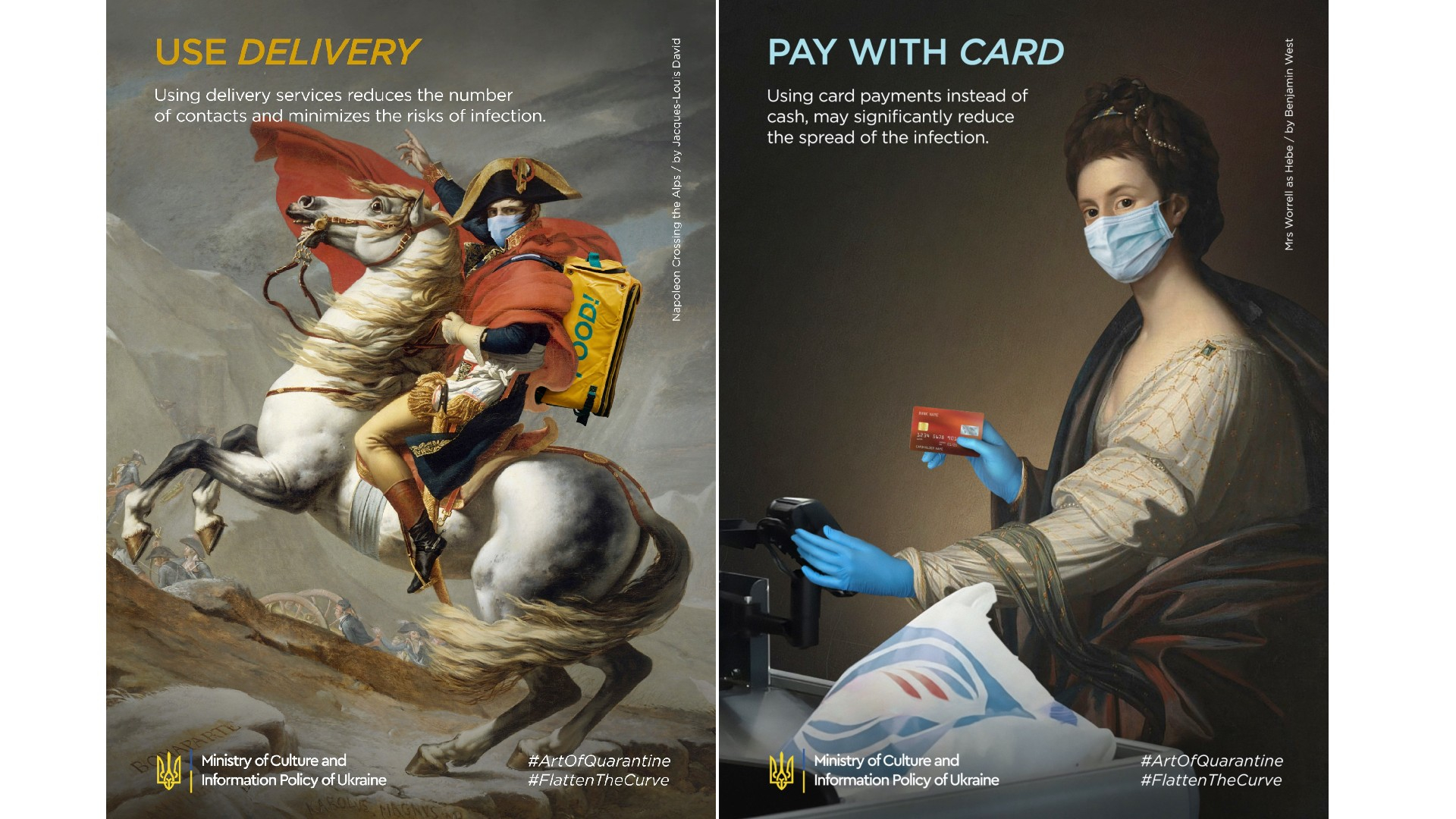
David and West espouse delivery and cardless payment. /Ministry of Culture and Information Policy of Ukraine
David and West espouse delivery and cardless payment. /Ministry of Culture and Information Policy of Ukraine
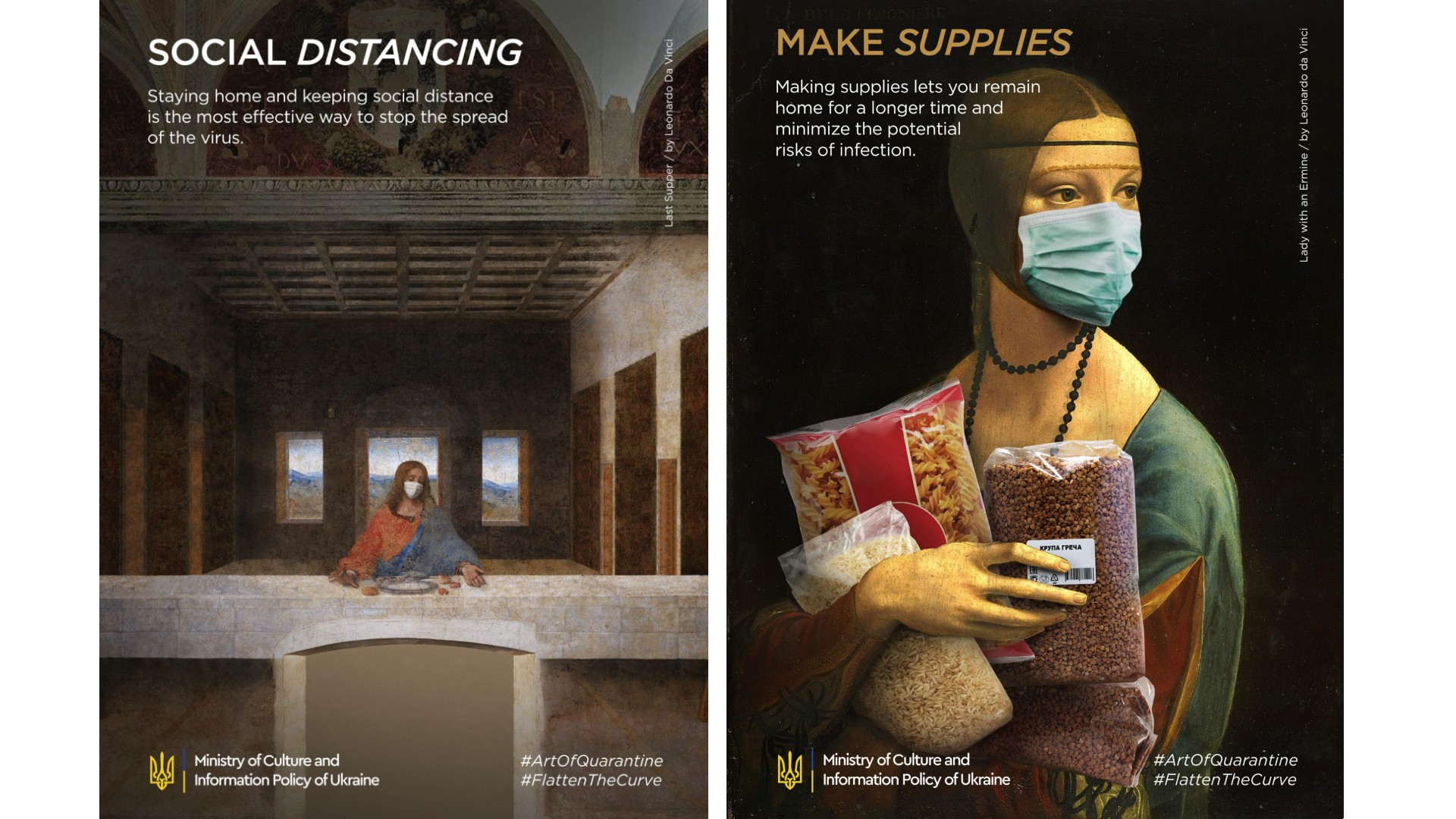
Two Da Vincis explain social distancing and stocking up. /Ministry of Culture and Information Policy of Ukraine
Two Da Vincis explain social distancing and stocking up. /Ministry of Culture and Information Policy of Ukraine
Handwashing
As January turned to February and the first COVID-19 transmissions in Europe came to light, various governments moved into public information mode. The first big campaign, encouraging the regular and thorough washing of hands for at least 20 seconds, seems to have been relatively successful judging by the enthusiastic level of social media engagement it caused.
In the UK, National Health Service (NHS) officials circulated commendably clear public information with a series of cartoon images illustrating the correct technique – and crucially combined this with the aide-memoire that the 20-second minimum time for washing could be used to sing Happy Birthday twice.
Soon, various other popular songs were put forward as alternatives, and a 17-year-old called William Gibson from Northamptonshire, England, created a meme generator at WashYourLyrics.com which would overlay the words of any song on the NHS poster; 175,000 posters were created in the site's first three days. "I had a feeling it would be popular," said a slightly bemused Gibson, "but I didn't think it would go quite this big."
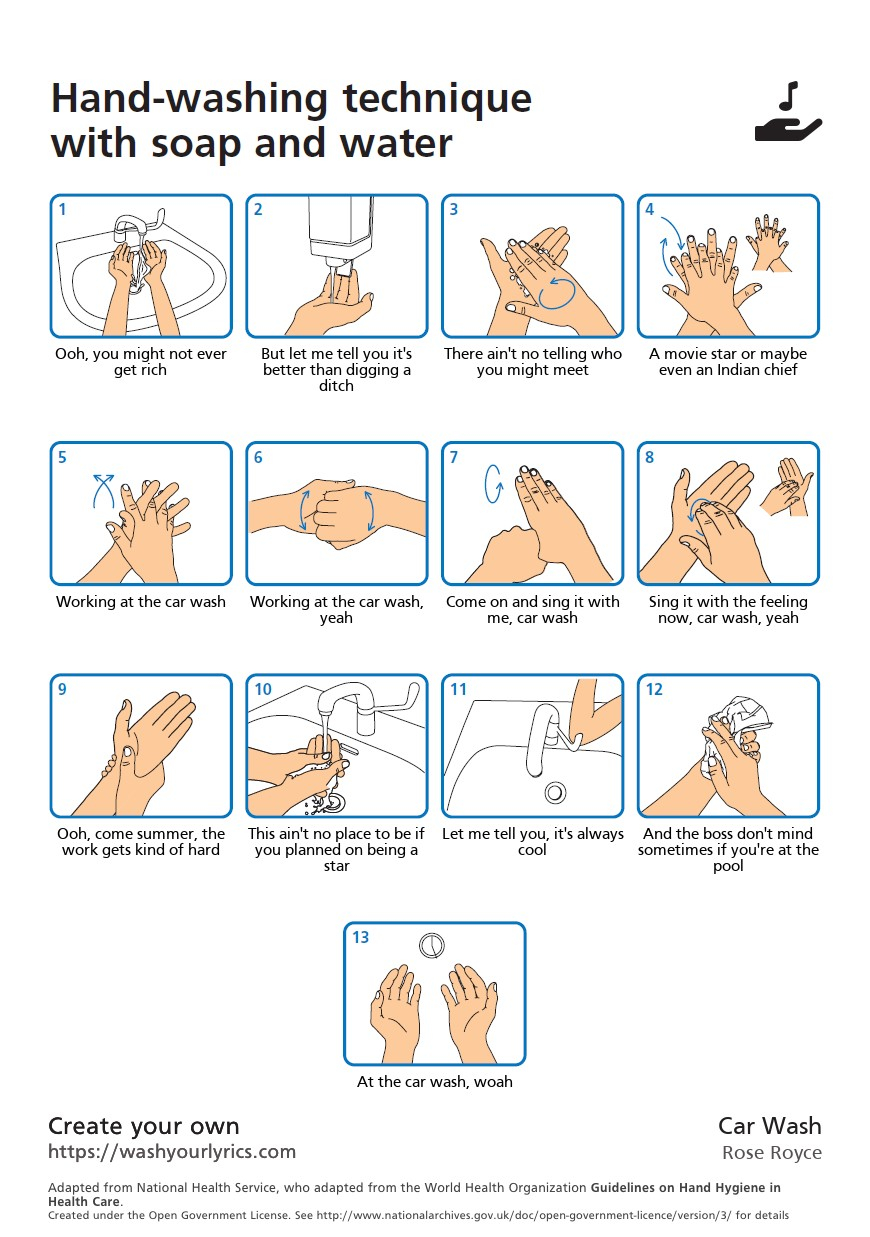
In England, a teenager created a site to let people add lyrics of their choice to the government's hand-washing information. It was incredibly popular. /WashYourLyrics.com/PHE
In England, a teenager created a site to let people add lyrics of their choice to the government's hand-washing information. It was incredibly popular. /WashYourLyrics.com/PHE
Such interpretations may strike some as flippant but everyone who engaged with the site will have learnt (or relearnt) that 20 seconds of efficient hand-washing can limit viral spread. Health organizations have long been aware that whatever aids recall can save lives – hence successful previous campaigns suggesting people administering cardiopulmonary resuscitation (CPR) should act to the rhythm of songs including Stayin' Alive and Achy Breaky Heart.
Sadly, not all messages are as easily absorbed.
00:48
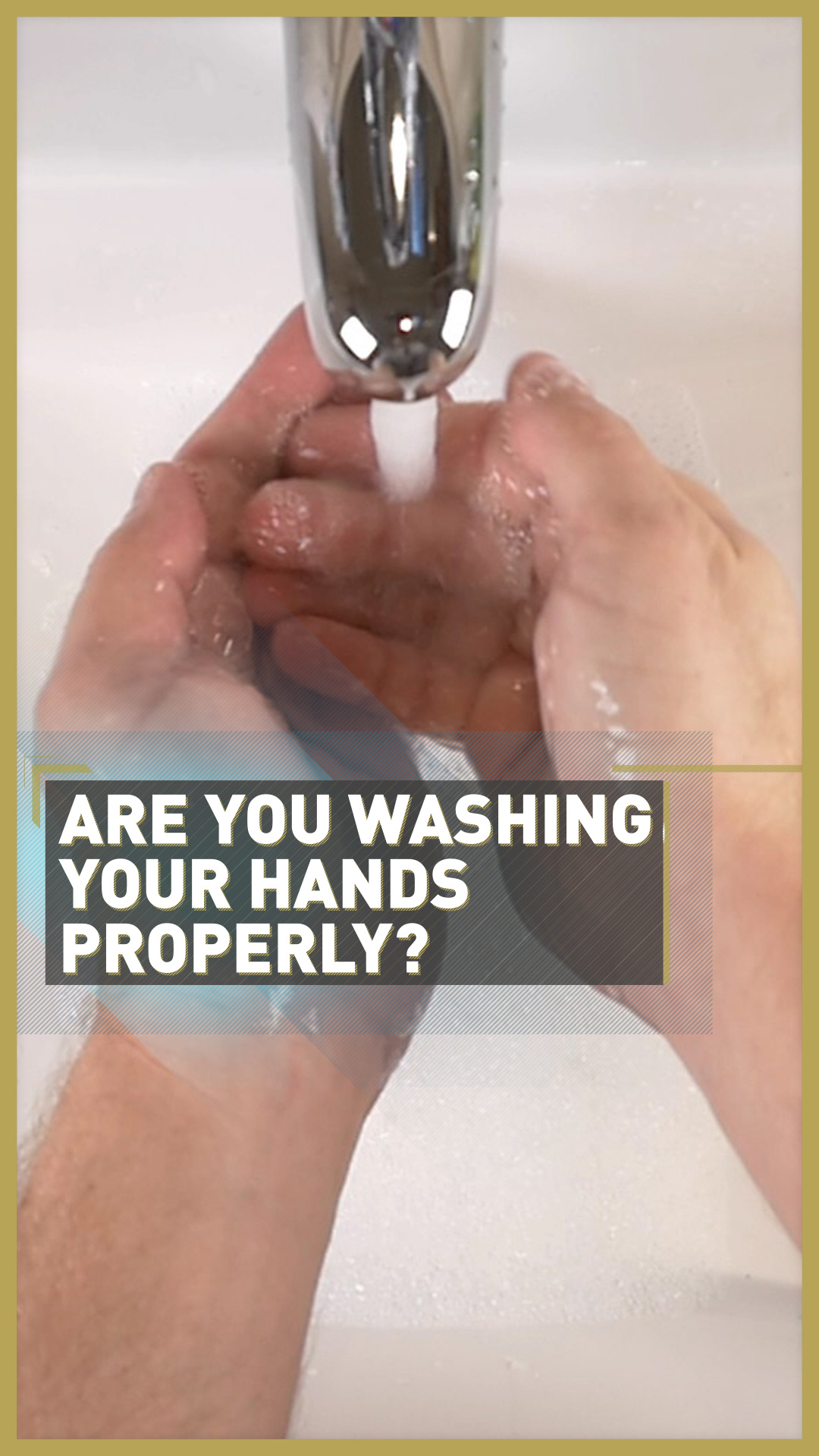
Social – or physical – distancing
Everybody knows they should wash their hands, but new lessons can be harder. By mid-March, much of Europe was learning a new phrase: social distancing.
Actually, it's not a new phrase, and it's quite an old concept. The World Health Organization (WHO) has been using the phrase since at least 2006; a 1959 WHO consultation into influenza pandemics suggested avoiding crowding could slow the spread, while the very word quarantine comes from the 14th-century Venetian custom of keeping incoming ships offshore for the titular 40 days (quarantena) to avoid the Black Death.
Social distancing makes it sound like people should stop communicating with one another. Instead, we should be preserving as much community as we can even while we keep our physical distance from one another
- Jeremy Freese, professor of sociology, Stanford University
However, it was new to most people. Quoting data from Google Trends, Statista data journalist Felix Richter noted that searches for the term "social distancing" rocketed up 100-fold during the first fortnight of March because "many people aren't entirely sure what's behind the buzzword."
It's a vague phrase, with unpleasant undertones of isolation and ignorance: withdrawing not just from close contact but from the social contract of niceties and mutual concern. These linguistic misunderstandings are heightened in an era of social media – a communication tool the popularity and penetration of which lends great power. Families and friends split by the medical need to isolate can still keep in touch via the internet, but the nature of the phrase introduced doubt – the enemy of clear communication, as many theorists and specialists noted.
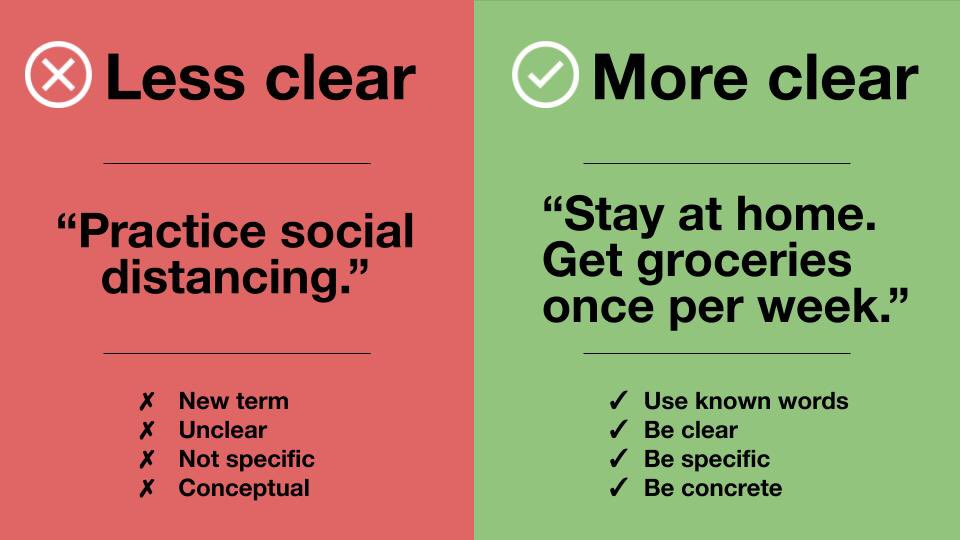
One website user experience designer posted this call for clarity and specificity. /Hybrid_UX_Research/Reddit
One website user experience designer posted this call for clarity and specificity. /Hybrid_UX_Research/Reddit
"Social distancing makes it sound like people should stop communicating with one another, while instead we should be preserving as much community as we can even while we keep our physical distance from one another," said Jeremy Freese, professor of sociology at Stanford University in the U.S..
Indeed, so vague is the phrase that the WHO changed course on 20 March, renaming the concept as "physical distance." As WHO epidemiologist Maria van Kerkhove explained: "Technology has advanced so greatly that we can keep connected in many ways without actually physically being in the same room or physically being in the same space with people." Although maintaining physical distance remained "absolutely essential," "it does not mean that socially we have to disconnect from our loved ones, from our family," she added.
Sadly, by that point, "social distancing" had become such a widely disseminated phrase that "physical distancing" has gained hardly any traction in common parlance: Google Trends analysis shows that many more people are still searching for the original phrase rather than the new one.
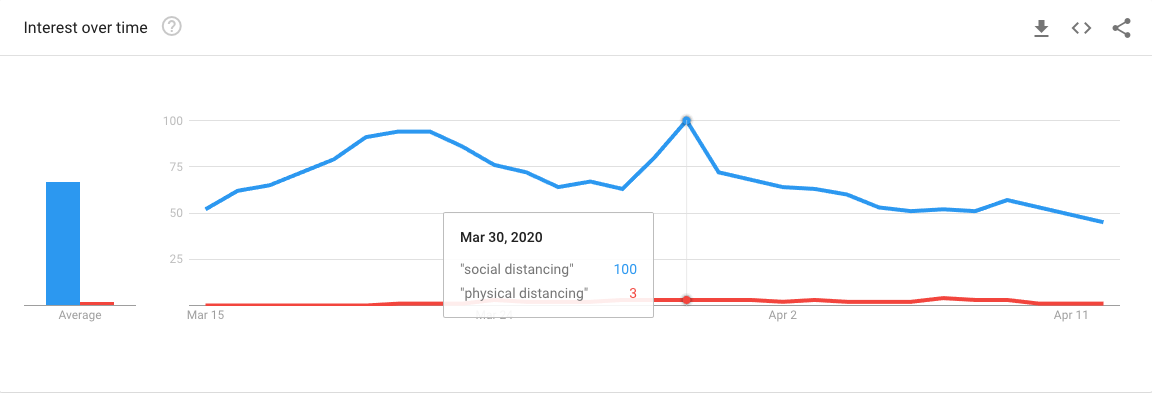
Google Trends, which compiles and compares the frequency of search terms, shows that 'social distancing' has been searched far more than 'physical distancing' even since the WHO prioritized the latter phrase on 20 March. /Google Trends
Google Trends, which compiles and compares the frequency of search terms, shows that 'social distancing' has been searched far more than 'physical distancing' even since the WHO prioritized the latter phrase on 20 March. /Google Trends
This is perhaps because "physical distancing" is less confusing, but more likely because "social distancing" has stuck in the consciousness – just as the misleadingly generalized name "coronavirus" has become conflated with COVID-19, the current pandemic disease caused by this variant of that type. To prove the point, most media organizations still refer to social distancing because that's what the public recognizes. The WHO may have changed tack, but to the public that linguistic ship has already sailed.
Changing messages, mixed messages
Correcting a misapprehension is always welcome, if not ideal. What has also hurt the messaging over social – sorry, physical – distancing was a lack of clarity on the basic details. For instance, exactly what distance should we be maintaining?
Here, again, the WHO had to change. For previous pandemics it had suggested one meter, but the U.S. Center for Disease Control and Prevention (CDC) nominated two meters, and the larger measure stuck – even when the Massachusetts Institute of Technology found that any sneeze or cough can expel droplets up to eight meters.
The two-meter distance has lent itself to some interesting comparisons. In the Yukon, members of the public have been urged to keep one caribou apart; Florida's Leon County suggested maintaining an alligator's-length distance, while Australian authorities used the kangaroo as a unit of a measurement. It's interesting to note the implied danger and wild nature of each of these creatures.
Less conceptually striking was the advice to imagine holding a "big broom" and waving it about, or one suggestion Tweet-reported from a supermarket queue: "Can you get an ironing board down?"
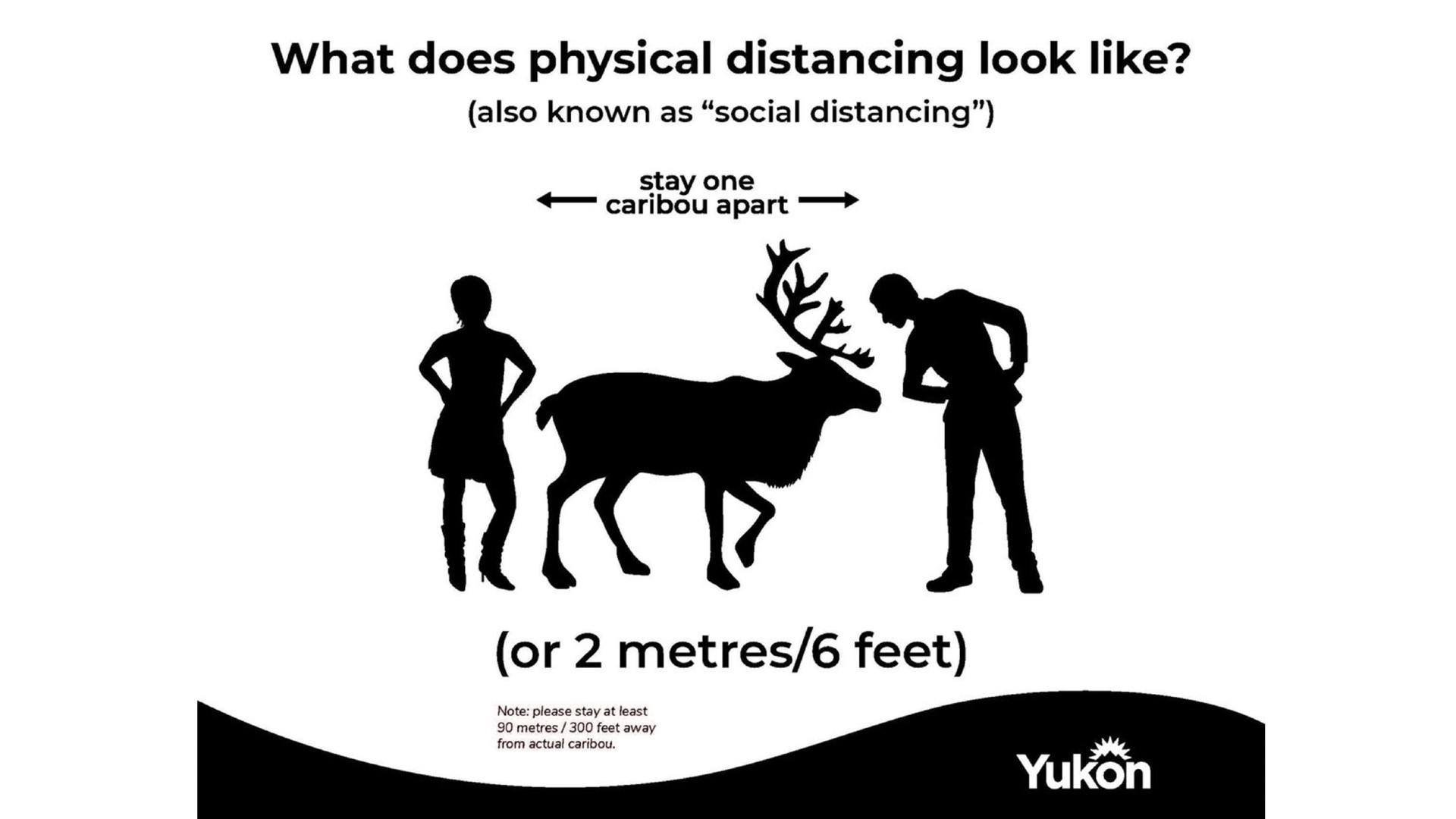
In the Yukon, Canada, authorities cited the caribou. /@HHSYukon/Twitter
In the Yukon, Canada, authorities cited the caribou. /@HHSYukon/Twitter
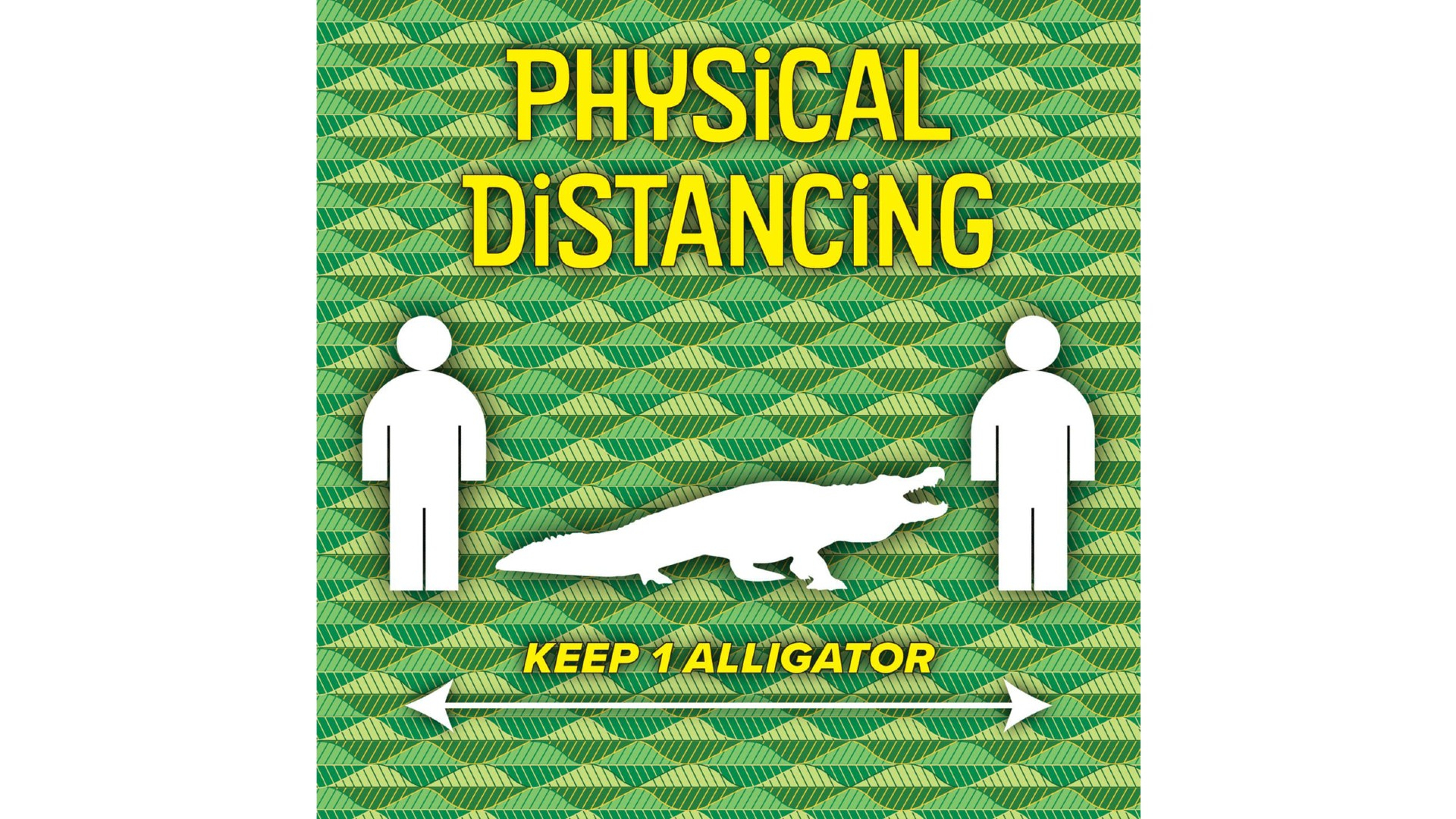
Floridians were expected to know the length of an alligator. /@LeonCounty/Twitter
Floridians were expected to know the length of an alligator. /@LeonCounty/Twitter
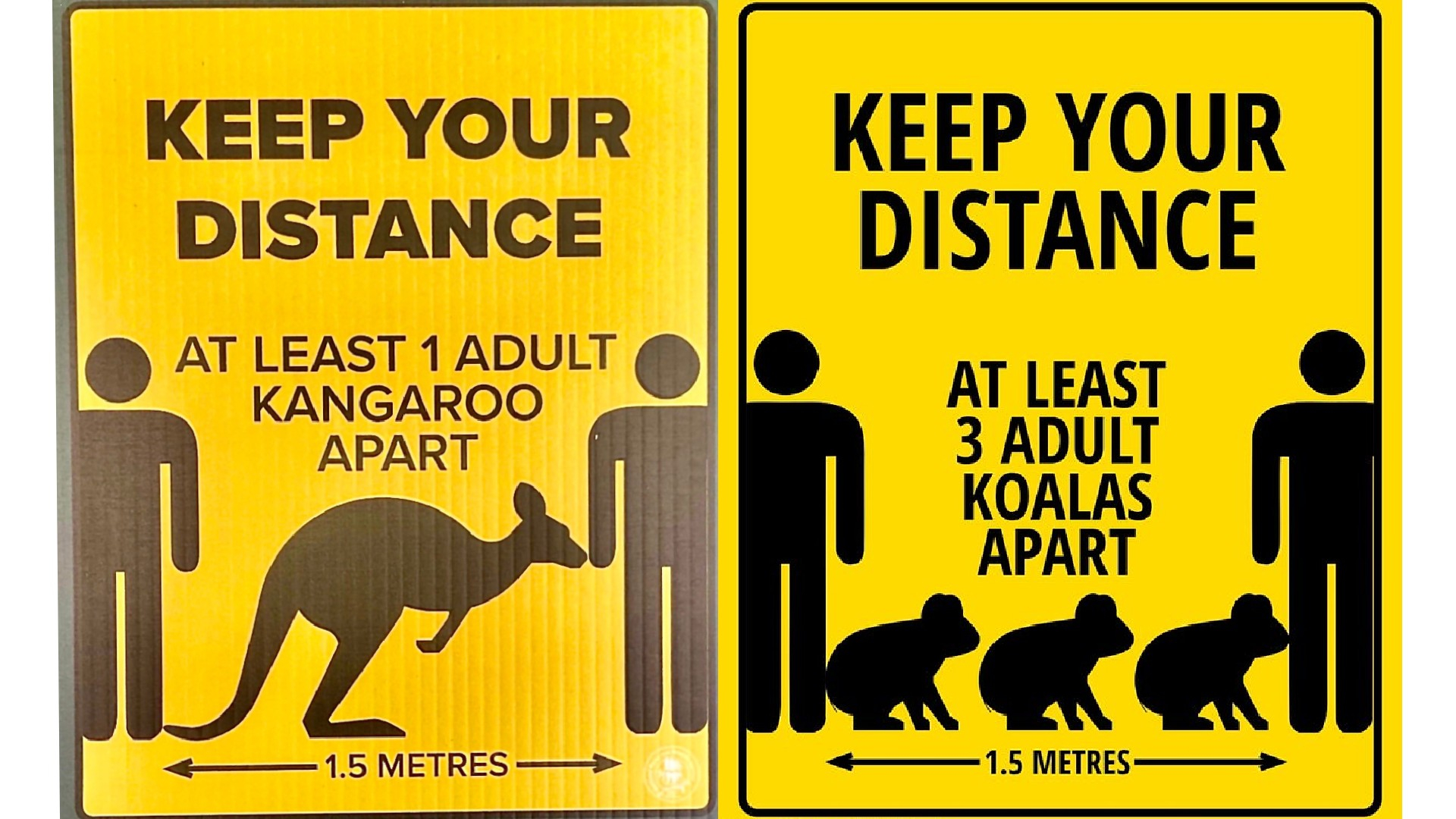
Australians were invited to contemplate the kangaroo and koala. /@ausgov/Twitter
Australians were invited to contemplate the kangaroo and koala. /@ausgov/Twitter
All the clarity of advice in the world won't help if leaders undercut it. On 3 March, as the UK dealt with its first 100 or so cases of COVID-19, prime minister Boris Johnson took bizarre pride in announcing that during a hospital visit: "I shook hands with everybody, you'll be pleased to know, and I continue to shake hands."
To be fair to Johnson, he wasn't acting alone – some scientists had indicated that there was little danger in shaking hands, even if others warned against it – but his belligerent attitude did little to promote thoughtfulness or safety… including his own. Within three weeks, he was diagnosed with COVID-19 and then taken into intensive care.
At around the same time, Scotland's chief medical officer was forced to resign after flouting her own stay-put advice by visiting her second home for the weekend. It is difficult enough to persuade the public to change their ways without those in authority exempting themselves from the upheaval.
The masks of anarchy
There has also been much confusion over face masks. In many Asian countries, particularly on the Pacific Rim, these have long been publicly visible statements of personal intent to reduce the spread of any aerially communicable virus, from the common cold upwards. Culturally, the widespread distribution and usage of face masks was as natural a step as wearing a scarf in winter.
However, in much of the West the face mask is a much rarer public sight. This lack of familiarity can breed contempt or at least suspicion of those wearing masks, which can limit uptake; more notably, the lack of demand inhibits supply – so when cases started to spiral upwards, stocks were rapidly depleted by panic buyers.
That public reaction played out while authorities contradicted each other over whether face masks were useful, desirable or even counterproductive. Some suggested that advising the use of masks would cause a shortage for those who need them the most: as the WHO's Michael Ryan put it, "We must preserve medical, surgical and respirator masks for our front-line workers."
Others worried that people using masks might lessen public diligence over hygiene and physical distancing, while some doubted it worked anyway. "There is no specific evidence to suggest that the wearing of masks by the mass population has any potential benefit," said Ryan in late March. "In fact there's some evidence to suggest the opposite, in the misuse of wearing a mask properly or fitting it properly."
Given growing evidence that asymptomatic transmission is contributing to COVID-19 spread, it's time for the CDC to recommend public, non-medical mask use
- Tom Inglesby, director of the Johns Hopkins Center for Health Security, argues against the advice from the U.S. Center for Disease Control
This attitude amazed some experts. "The big mistake in the U.S. and Europe, in my opinion, is that people aren't wearing masks," said George Gao, the director-general of the Chinese Center for Disease Control and Prevention. "Many people have asymptomatic or presymptomatic infections. If they are wearing face masks, it can prevent droplets that carry the virus from escaping and infecting others."
On 30 March, Tom Inglesby, director of the Johns Hopkins Center for Health Security, took to Twitter with a long and heartfelt appeal to the U.S. Center for Disease Control: "Given growing evidence that asymptomatic transmission is contributing to COVID-19 spread, it's now time for CDC to make recommendation for public, non-medical mask use to try to diminish asymptomatic people from spreading the virus…
"It's critical that all medical masks [N95, surgical, procedural] be given to healthcare workers and emergency personnel – there is a terrible shortage of these masks, and so all of them need to go to those caring for COVID patients. But members of the general public should wear non-medical fabric face masks when going out in public in one additional societal effort to slow the spread of the virus down."
A few days later, the CDC did indeed reverse its previous indifference to public use of face masks, supplying instructions for homemade cloth masks from T-shirts and bandanas – and on 6 April, the WHO acknowledged that "wearing a medical mask [in public] is one of the prevention measures that can limit the spread of certain respiratory viral diseases including COVID-19." But in Europe, by 26 April, only the governments of Austria, Bosnia and Herzegovina, Bulgaria, Czechia, Germany, Lithuania, Poland and Slovakia were telling their citizens to mask up in public.
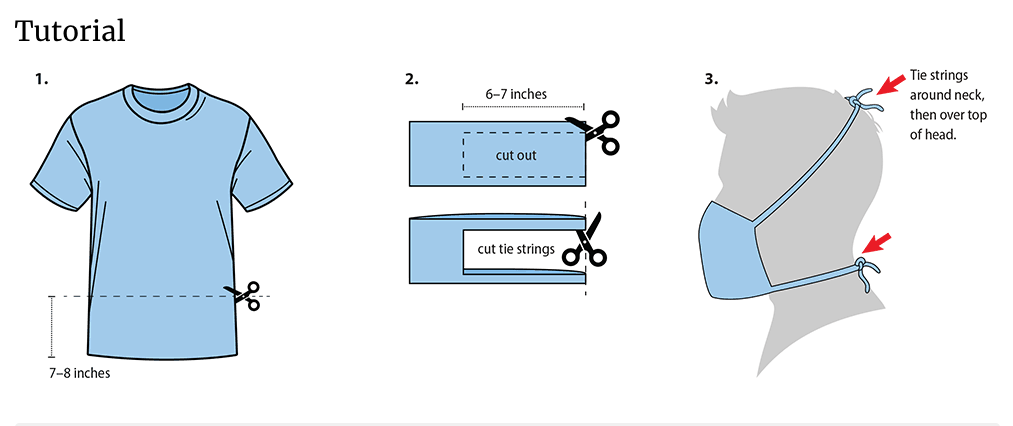
The U.S. Center for Disease Control eventually changed its mind on face masks and provided instructions for homemade ones. /CDC.gov
The U.S. Center for Disease Control eventually changed its mind on face masks and provided instructions for homemade ones. /CDC.gov
'Take it on the chin'
When experts disagree, authorities are left in a difficult spot: they can either dither or subscribe to an argument which is later proven disastrously wrong.
In a television interview on Thursday 5 March, Boris Johnson was asked about UK government measures to delay the peak of the outbreak. He replied: "One of the theories is that perhaps you could take it on the chin, take it all in one go and allow the disease, as it were, to move through the population, without taking as many draconian measures."
As COVID-19 infections shot up sickeningly in his country, the phrase "take it on the chin" would haunt Johnson for the rest of the outbreak – and perhaps his political career. In truth, Johnson had immediately countered the theory with "I think we need to strike a balance... I think it would be better if we take all the measures that we can now to stop the peak of the disease being as difficult for the NHS as it might be, I think there are things that we may be able to do" – but the accusation remains that the UK government was initially following the so-called "herd immunity" theory.
In early March, most European governments were in a quandary as to whether and when to introduce spread-limiting procedures like closing restaurants, schools and workplaces or imposing curfews, lockdowns and quarantines. Such decisions are never easy, even when scientific advice is unanimous. But the suspicion lingers that some in the West may have underestimated the enormity of the timebomb rolling their way.
Indeed, some of the clearest and most effective communication has come not from governments and health organizations but from the commercial world. To some extent, this is to be expected: businesses have, after all, been selling messages for much longer than even politicians. But some of the world's biggest brands have thrown their weight behind COVID-19 messaging with memorable results.
Using their hard-earned brand recognition, Nike and Ikea both set their advertising agencies to work on reinforcing the "stay at home" messaging – Ikea through its literally iconic instruction manuals, Nike via an inspirational message to all wannabe heroes. Meanwhile in France, Burger King published light-hearted instructions for "quarantine" versions of its food products – using other domestic brands to make sandwiches at home.
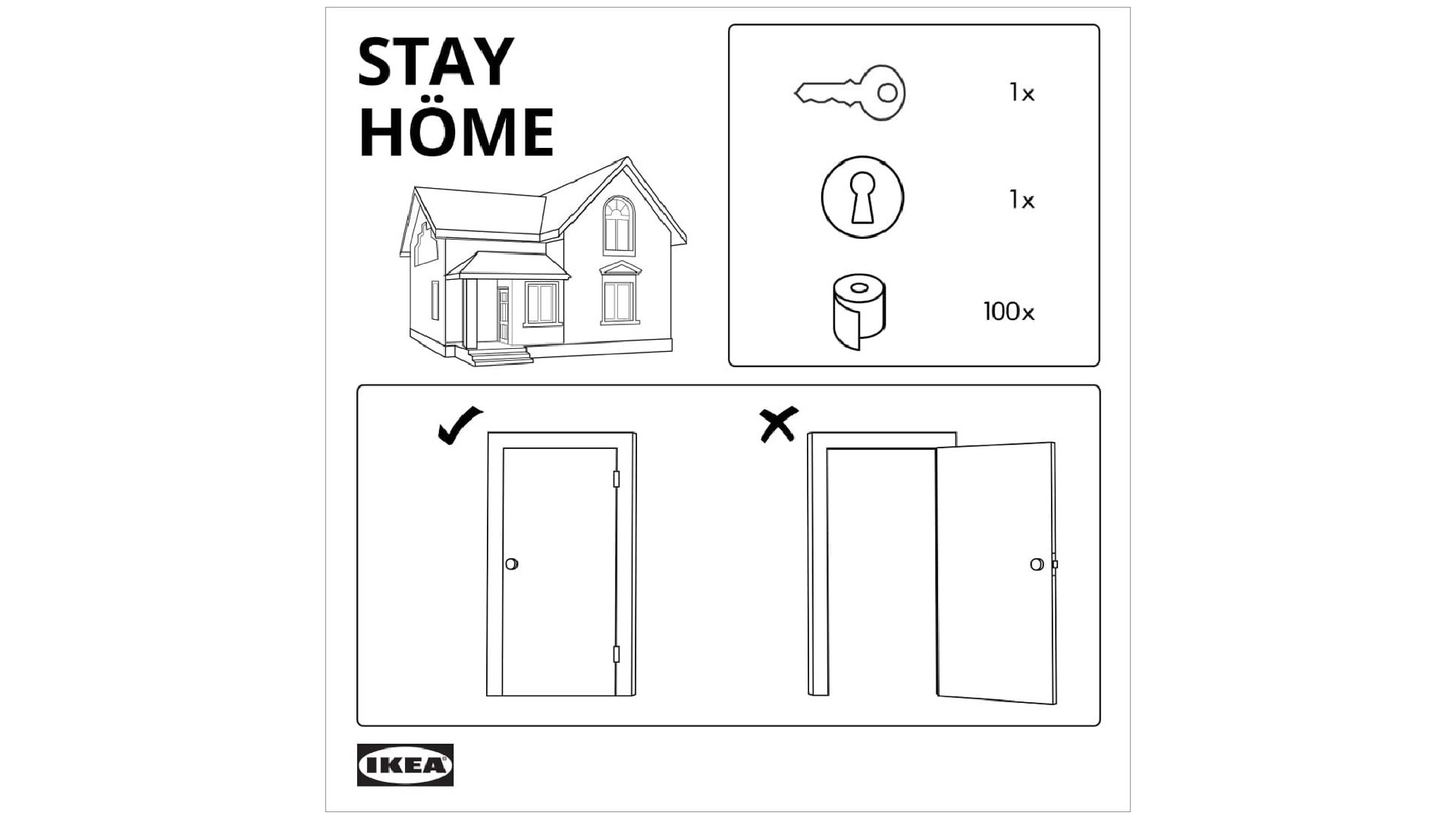
Ikea played on its branding. /McCann Tel Aviv
Ikea played on its branding. /McCann Tel Aviv
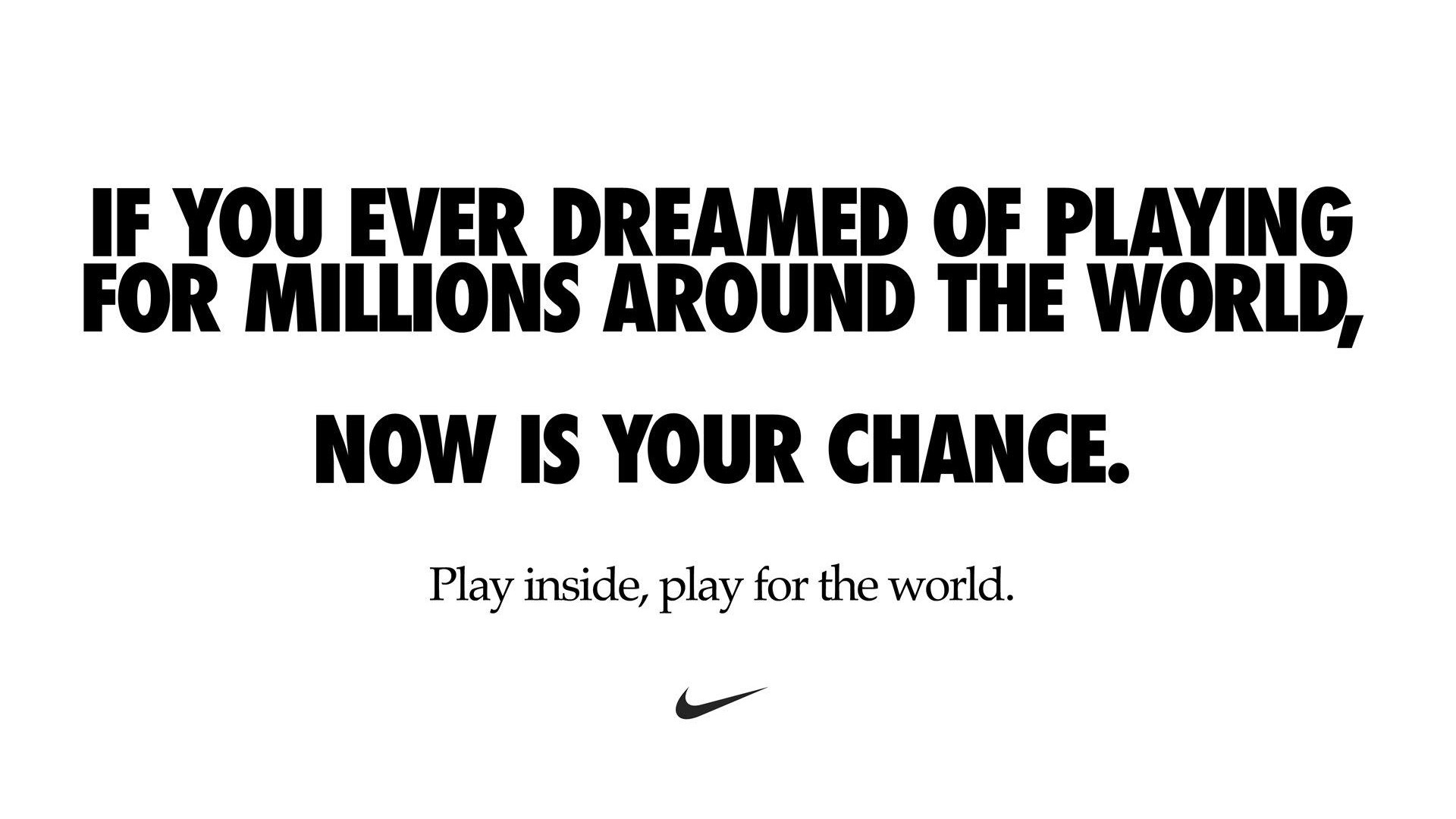
Nike appealed to the inner hero. /Wieden + Kennedy
Nike appealed to the inner hero. /Wieden + Kennedy
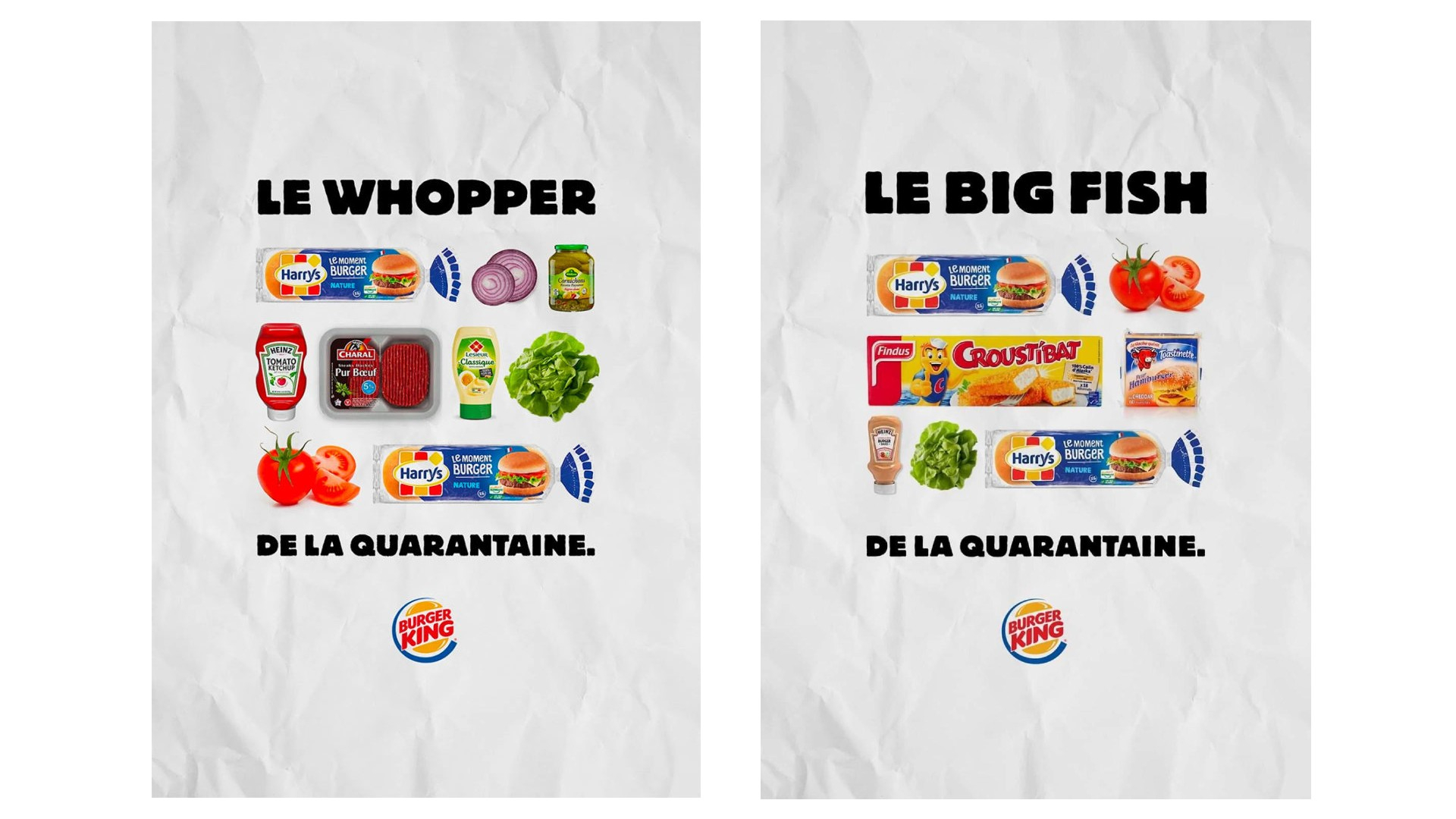
In France, Burger King posted DIY recipes. /Buzzman
In France, Burger King posted DIY recipes. /Buzzman
If you can hold your breath for 10 seconds, then you don't have the disease
- Fox News presenter Geraldo Rivera spreads an untruth from social media
And that's without even starting to mention another virally spread problem: fake news, which isn't only spread by faceless agitants online. In the U.S., Fox News presenter Geraldo Rivera told viewers: "If you can hold your breath for 10 seconds then you don't have the disease" – a fact-free self-diagnosis which may have encouraged many carriers out of isolation.
Similarly, in the UK, popular daytime TV presenter Eamonn Holmes was far too equivocal when discussing the conspiracy theory that 5G masts are causing coronavirus, lending weight to the fake-news theory that the media was dismissing the idea too lightly: "They don't know it's not true," he said. Dozens of masts have been attacked, including ones at hospitals set up to treat COVID-19 patients, meaning dying sufferers in isolation could not say goodbye to their loved ones.
01:29
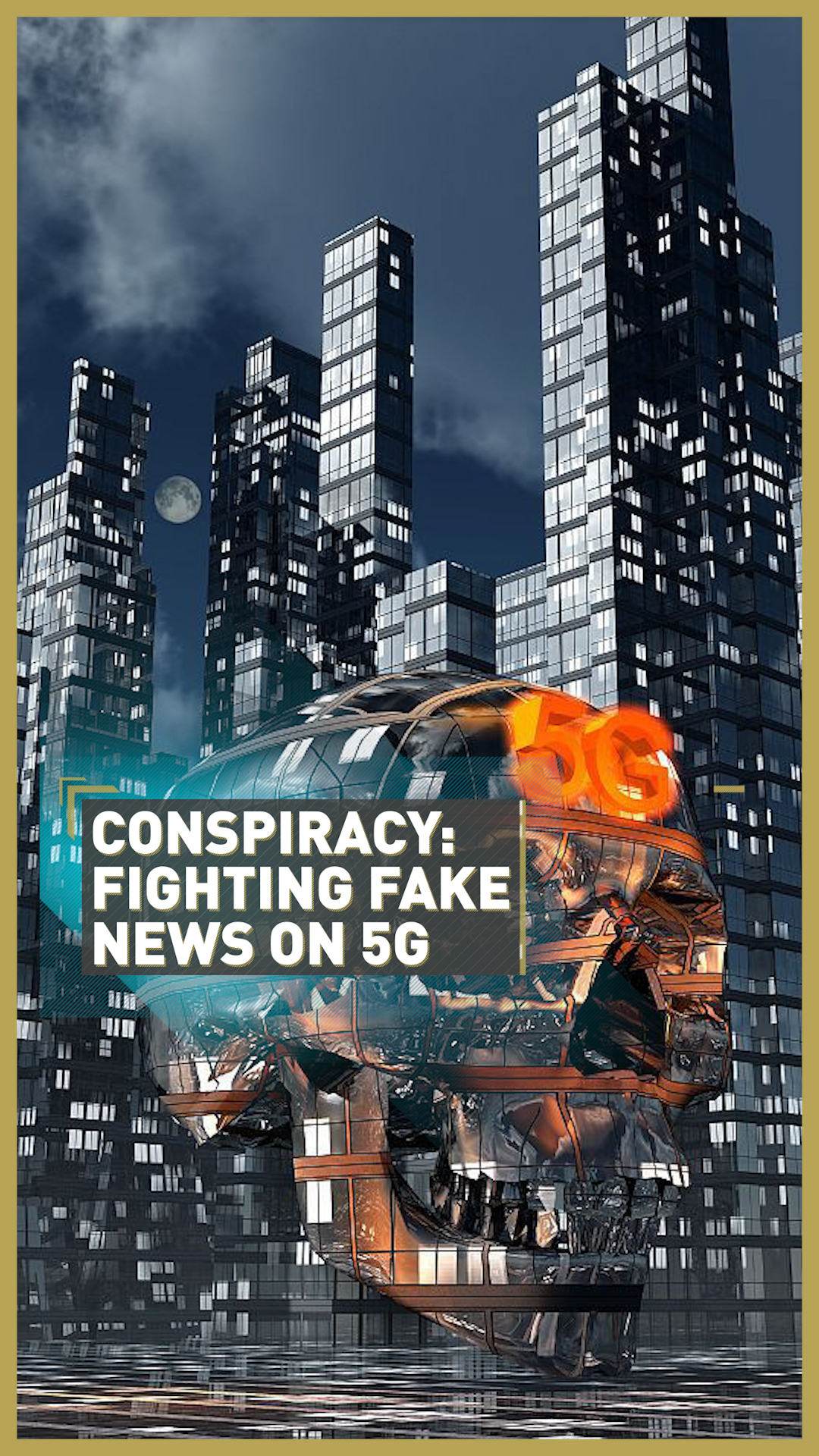
Throughout the COVID-19 outbreak, there has been confusing and conflicting advice. Partly this is due to its pandemic nature – it's difficult for authorities around the world to speak with one voice; partly it is also due to a lack of knowledge about the disease. But we will always suffer the latter: one of the definitions of a pandemic is that it is a new disease, or at least a new strain. The next time our world is put in jeopardy – and, for that matter, for the rest of this outbreak – we must hope that the authorities in control of our destiny can collaborate effectively, decide wisely and communicate effectively.
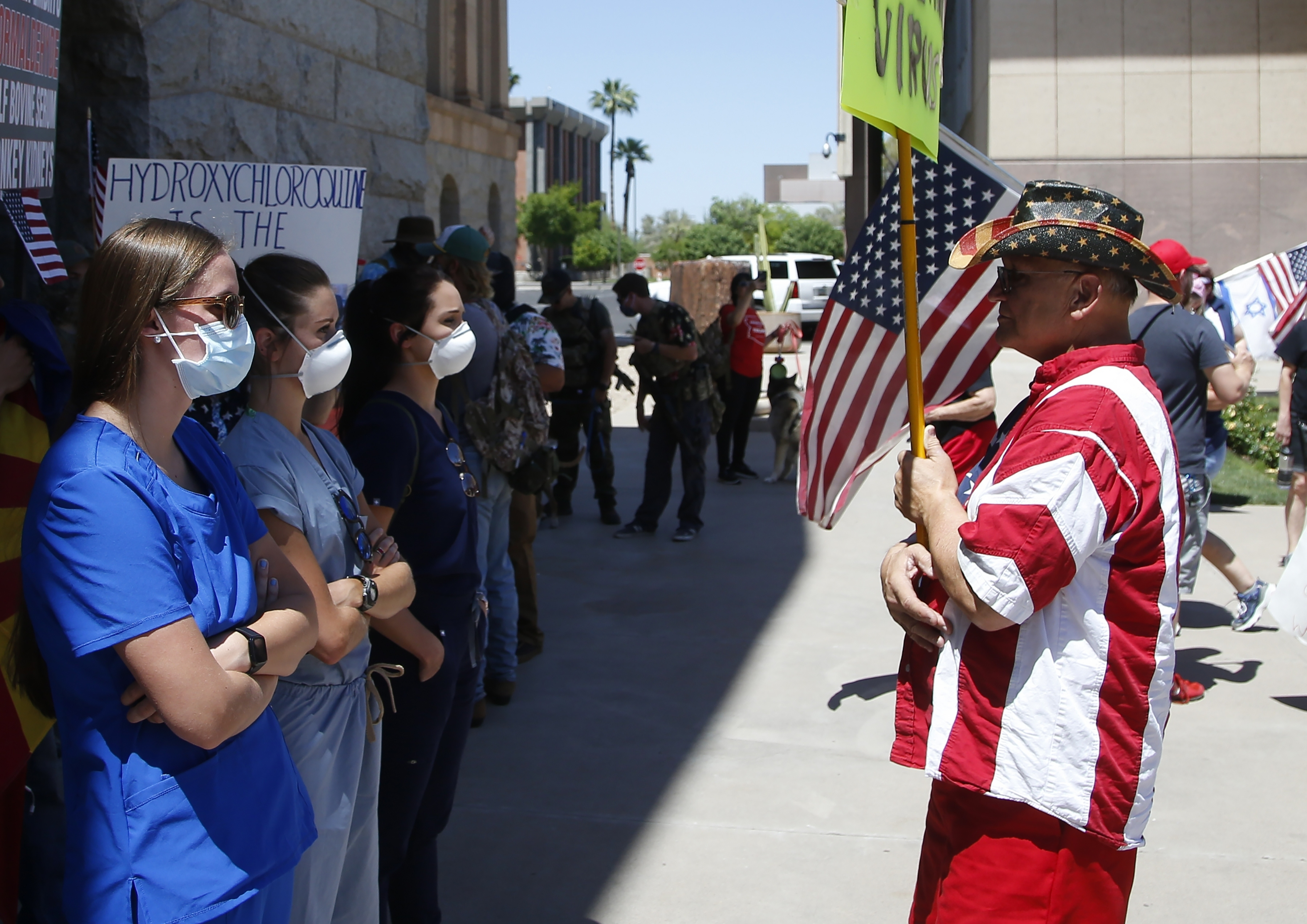
Counter-protesting caregivers stand across from a protester rallying at the state Capitol in Phoenix to 're-open' Arizona. /Ross D. Franklin/ AP Photo.
Counter-protesting caregivers stand across from a protester rallying at the state Capitol in Phoenix to 're-open' Arizona. /Ross D. Franklin/ AP Photo.